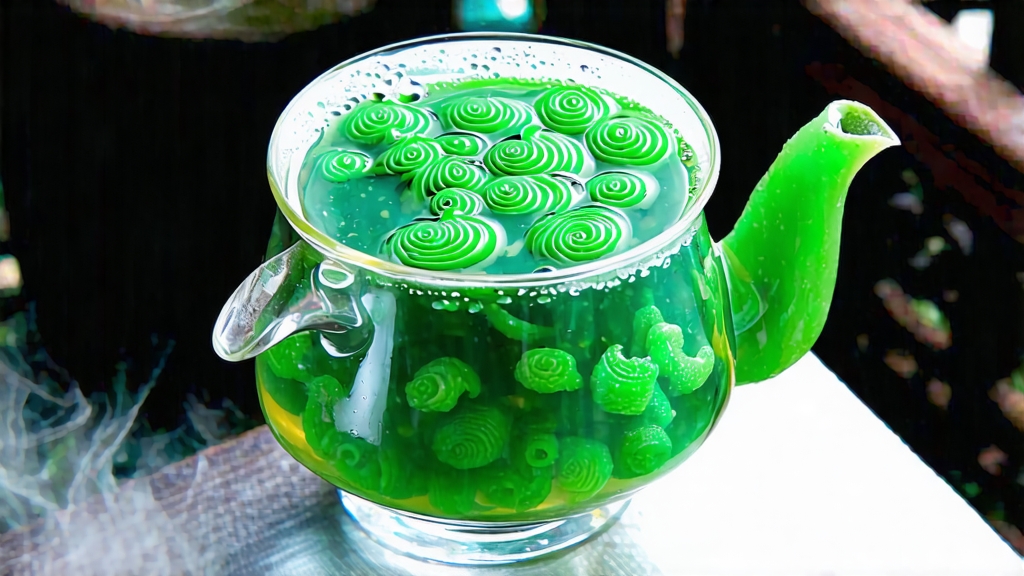
Biluochun, whose name translates literally to “Green Snail Spring,” is one of China’s ten most celebrated teas, yet it remains a quiet legend outside Asia. Produced only in a micro-zone of hills that cradle Taihu Lake in Jiangsu Province, this tea turns the idea of “terroir” into liquid poetry: each leaf carries the scent of apricot blossoms, river fog, and the sweet rot of water reeds. To understand Biluochun is to listen to a 1,200-year-old conversation between monks, emperors, tea gardeners, and the lake itself.
History: From Island Offering to Imperial Tribute
The first written record appears in the Tang Dynasty (618-907) travelogue of Lu Yu, the “Sage of Tea,” who noted that monks on Dongting Mountain steamed wild tea leaves to keep awake during sutra copying. By the Song era, the tea—then called “Xia Sha Ren Xiang” (literally “Scary Fragrance”)—was so aromatic that palace runners refused to carry anything else alongside it for fear of cross-scenting silk parcels. The Kangxi Emperor (r. 1661-1722) renamed it Biluochun during a southern inspection tour; he found the curled shape reminiscent of a snail shell and the harvest season coincided with the spring equinox. Tribute status followed, and the court’s annual quota was set at nine jin (4.5 kg), picked only between the Qingming and Grain Rain solar terms.
Micro-Terroir: One Lake, Two Peaks, Three Aromas
Authentic Biluochun comes from within a 10-km radius of Dongting Mountain’s East and West peaks, an area no larger than 3,000 hectares. The lake acts as a giant heat reservoir, creating nightly fogs that slow photosynthesis and concentrate amino acids. Between the rows of tea bushes, fruit growers plant peach, plum, apricot, and loquat trees; their roots share mycorrhizal fungi with the tea, and their petals fall like snow onto the bushes, imprinting a lingering fruity note that chemical analysis later identifies as high levels of geraniol and linalool. Soil is a loose, slightly acidic sandy loam rich in magnesium and iron—minerals that give the steeped liquor its jade fluorescence.
Cultivars: Seedlings, Clones, and the Golden Branch
The original seedling population, known as Qunti (group) cultivar, is still propagated by seed, producing bushes with deep roots and complex flavor but variable leaf size. In the 1980s researchers selected a clonal variant, Dongting Small-Leaf #1, prized for uniform germination and higher catechin-to-theanine ratio. A rare “Golden Biluochun” exists—an albino mutant that emerges yellow-green and requires 30 % shade cloth; it tastes like white peach and sells for over USD 3,000 per 100 g at spring auction. Farmers guard cuttings the way vintners guard prized Pinot clones.
Plucking Code: 70,000 Buds per Jin
The standard is one unopened bud plus the adjacent leaf still folded like a paper fan—what locals call “copper wire, spiral shape, covered in white.” Pickers work from 5 a.m. to 9 a.m., before the sun angle climbs above 30 °, to keep cell sap cool. A skilled woman can gather 600 g of fresh leaf in four hours; that shrinks to 150 g after firing, and 100 g of finished tea demands roughly 70,000 individual buds. Any leaf larger than 1.5 cm is rejected, and petals or insect bites mean the whole basket is downgraded to “Zhenmei,” a secondary grade sold domestically.
Craft: The 15-Minute Breath of Fire
Biluochun is the only famous green tea still entirely hand-fried on a cast-iron pan heated by knotless lychee wood. The sequence—kill-green, roll, strip, dry—lasts exactly 15 minutes, during which the tea master’s palm becomes the thermometer. Pan temperature drops from 190 °C to 80 °C in three discrete stages; moisture falls from 75 % to 6 %. The critical “strip” motion is a wrist flick that coaxes the bud to curl around the forefinger; 1,200 flicks per 100 g, each lasting 0.8 seconds, create the signature spiral. If the leaf temperature lingers above 95 °C for more than